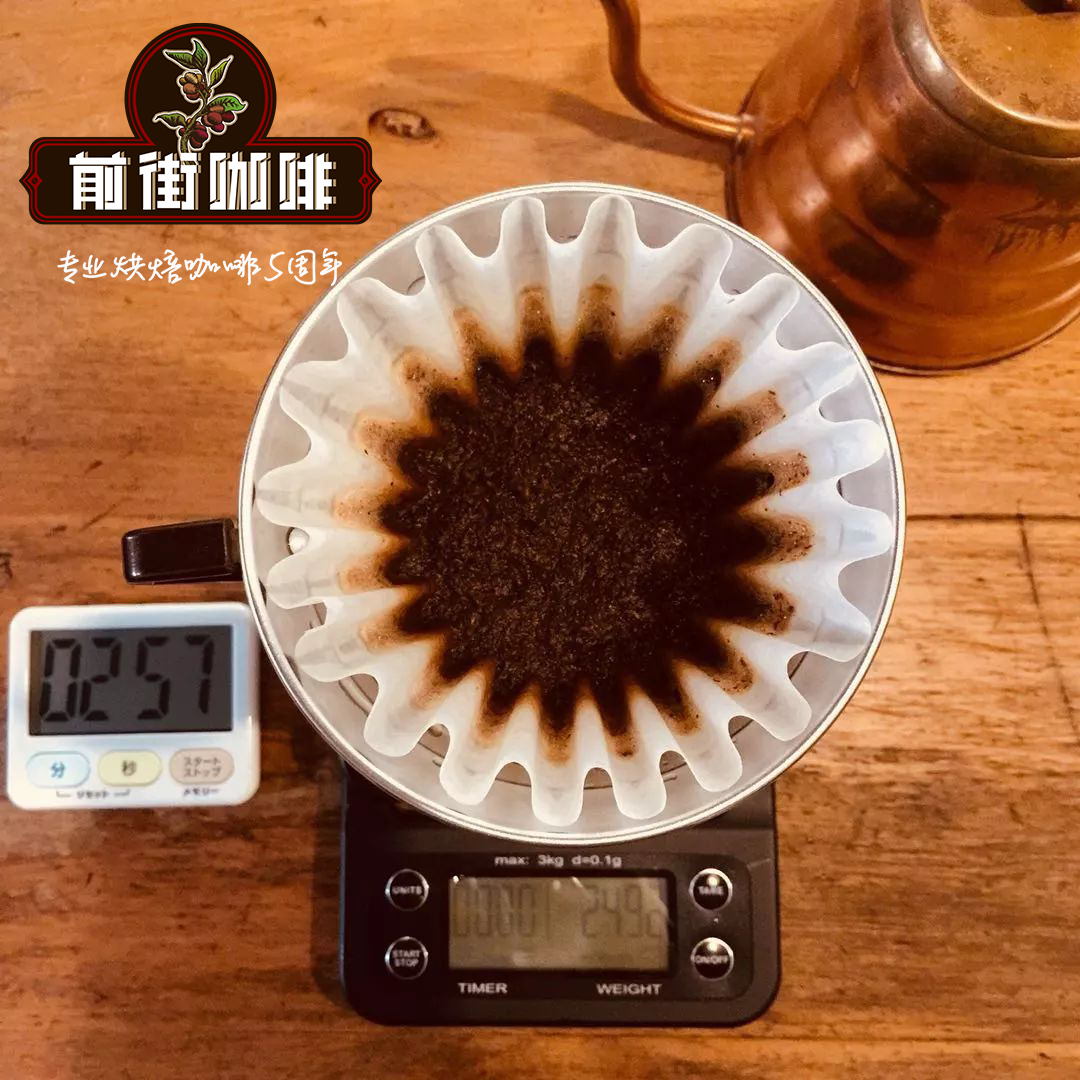A brief introduction to the types and producing areas of Coffee beans the main components and functions of Coffee

Professional coffee knowledge exchange more coffee bean information please follow the coffee workshop (Wechat official account cafe_style)
Qianjie-brief introduction of Arabica Coffee beans and ingredients
Coffee tree is a flowering plant of the genus Coffea of Rubiaceae. At present, there are about 120 species, ranging from small shrubs to 18-meter-tall trees. Wild coffee species grow irregularly in the tropics, and new species are still being discovered. Strictly speaking, only two major species of coffee are cultivated to produce coffee: Arabica coffee (Arabica) and Canifra coffee (English Canephora, often referred to as "Robusta coffee"). However, in order to meet the needs of domestic coffee consumption, a third species, Liberian coffee, has been planted in a small number of countries such as the Philippines.
Nearly 70% of the world's commercially grown coffee is Arabica coffee, with a total of 7 million tons of roasted coffee each year. Robusta coffee accounts for the rest of the market, mainly produced in Java, Sumatra and Vietnam in India, Indonesia and Vietnam, which contributes nearly half of the world's total production of Robusta coffee. It is the second largest coffee producer in the world after Brazil.
Kanefra, round in shape, short in stature, flat and oval in shape, stands for "short and poor". The caffeine content is about twice that of Arabica beans, but its fat is lower than Arabica beans, and its sugar (sucrose) content is lower than Arabica beans. It tastes slightly bitter and has a slight wheat flavor.
Polysaccharides
The most abundant ingredient in raw beans is polysaccharides, accounting for 35% and 45%. Although it is called sugar, it is not sweet at all. Polysaccharides here refer to the fibers that make up the bones of plants. The polysaccharides content of Arabica species is very different from that of Canefa species.
Protein
The content of protein is 12%. Proteins and polysaccharides are important components of plant bones. In this regard, the content of Arabica species is also very different from that of Canefa species.
Fat
Raw coffee beans contain fat, and the fat in coffee beans is composed of linoleic acid, palmitic acid and so on. In terms of fat content, Arabica has a higher fat content, accounting for 20%, while Canefa accounts for up to 10%.
Sugars (sucrose)
The content of sucrose (in this case, granulated sugar) can account for 10% of Arabica species and 3% to 7% of Canefa species.
Chlorogenic acid
The content of chlorogenic acids, Arabica species accounted for 5%-8%, Canefra species accounted for 7%-11%. There are many kinds of chlorogenic acid, and some kinds of chlorogenic acid are found only in Canefa species.
Acids (other than chlorogenic acid)
In addition to chlorogenic acid, there are citric acid, malic acid, quinic acid, phosphoric acid and so on, which account for only 2%.
Caffeine
It accounts for 0.9% of Arabica species, 1.4% of the Arabica species, 2% of the Canefra species, and more than 3% of the Arabica species.
Amino acid
The content of amino acids is 1% 2%. The amino acids in coffee beans include aspartic acid, glutamic acid and so on. The proportion of various amino acids is different between Arabica species and Cafnella species. The content of these amino acids, sugars and chlorogenic acid also affects the coloring and flavor of Arabica and Caffnella during baking.
Knowledge expansion: caffeine accounts for 0.9% Mel 1.4% in Arabica: Carneflari usually accounts for 2%, more than 3% in more cases
In short: Qianjie is a coffee research hall, happy to share the knowledge about coffee with you, we share unreservedly just to make more friends fall in love with coffee, and there will be three low-discount coffee activities every month. The reason is that Qianjie wants to make more friends drink the best coffee at the lowest price, which has been Qianjie's tenet for 6 years!
END
Important Notice :
前街咖啡 FrontStreet Coffee has moved to new addredd:
FrontStreet Coffee Address: 315,Donghua East Road,GuangZhou
Tel:020 38364473
- Prev

Which are the main ingredients in high-quality coffee beans?
Professional coffee knowledge exchange more coffee bean information please follow the coffee workshop (Wechat official account cafe_style) front street-Arabica coffee beans, ingredients introduction coffee beans is the essence of a cup of coffee, the quality of coffee beans is not ideal, no matter how advanced coffee machine or how professional baristas, the coffee produced will not be of high quality. You should know how to make a good cup of coffee.
- Next

Introduction to three categories of coffee beans does the action of chlorogenic acid affect the flavor of coffee?
Professional coffee knowledge exchange more coffee bean information please follow the coffee workshop (Wechat official account cafe_style) front street-introduction of the three major coffee bean varieties, chlorogenic acid ingredients 1. The origin of the Arabica species is the Abyssinia Plateau of Ethiopia (now the Ethiopian Plateau). It was mainly eaten as medicine in the early days, and baked and drunk in the 13th century.
Related
- Beginners will see the "Coffee pull flower" guide!
- What is the difference between ice blog purified milk and ordinary milk coffee?
- Why is the Philippines the largest producer of crops in Liberia?
- For coffee extraction, should the fine powder be retained?
- How does extracted espresso fill pressed powder? How much strength does it take to press the powder?
- How to make jasmine cold extract coffee? Is the jasmine + latte good?
- Will this little toy really make the coffee taste better? How does Lily Drip affect coffee extraction?
- Will the action of slapping the filter cup also affect coffee extraction?
- What's the difference between powder-to-water ratio and powder-to-liquid ratio?
- What is the Ethiopian local species? What does it have to do with Heirloom native species?

